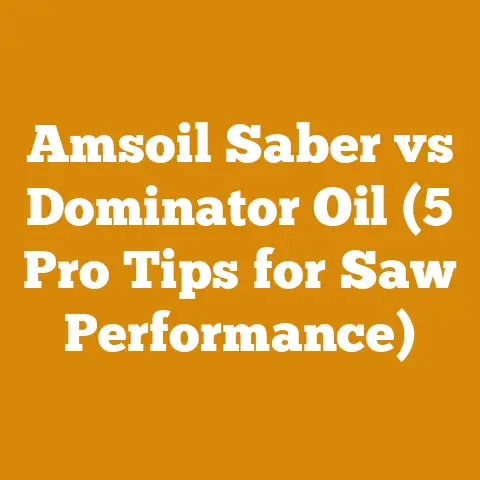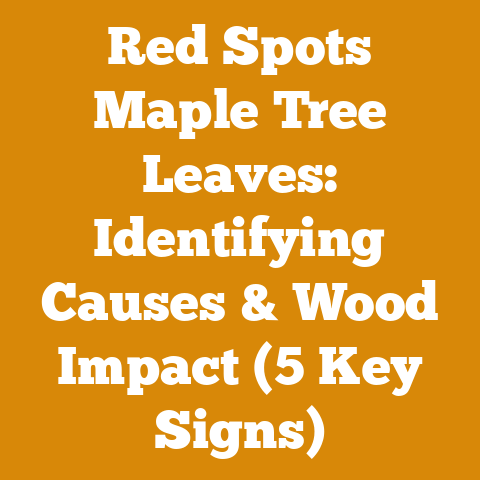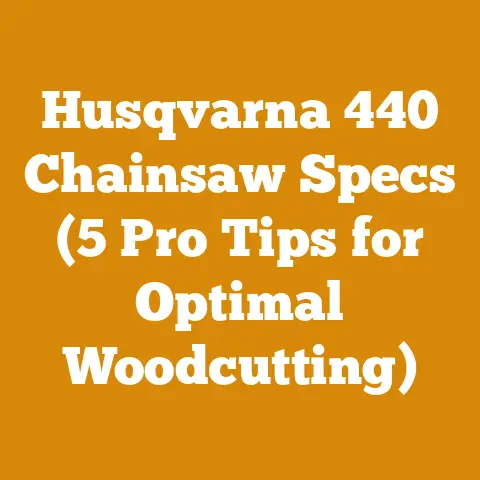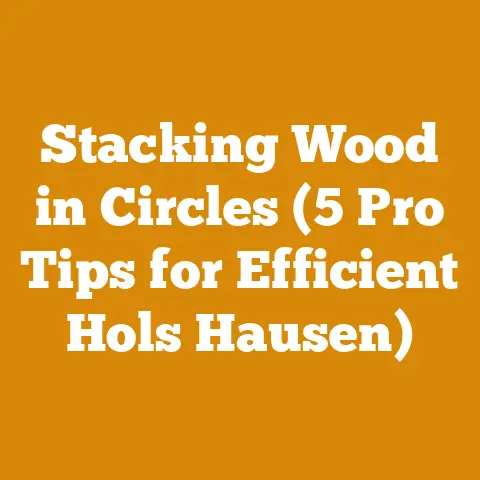How to Charge for Stump Grinding (5 Insider Pricing Tips)
The heartwood of a thousand-year-old Redwood, rich with tannins and secrets, whispers tales of time. It’s a material that embodies resilience, strength, and the profound connection between nature and our work. Just as the Redwood’s longevity stems from its unique composition, understanding the intricacies of pricing stump grinding requires a deep dive into the factors that make each job unique. In this guide, I’ll share insider tips I’ve gleaned from years in the arborist industry on how to accurately and profitably charge for stump grinding services.
How to Charge for Stump Grinding (5 Insider Pricing Tips)
Stump grinding isn’t just about making a yard look nicer; it’s about reclaiming space, preventing pest infestations, and ensuring safety. But figuring out how much to charge can feel like navigating a dense forest. You don’t want to undervalue your expertise and equipment, nor do you want to scare away potential clients with exorbitant prices. Let’s cut through the confusion.
1. Assess the Stump’s True Cost: Beyond Diameter
The most common pricing method revolves around the stump’s diameter. Makes sense, right? Bigger stump, more work. However, that’s just the tip of the iceberg. I’ve learned the hard way that relying solely on diameter can lead to significant underestimation.
- Diameter is King, But Depth is Queen: While diameter provides a general size estimate, the depth of the stump below ground is crucial. A wide but shallow stump is far easier to grind than a narrower but deeply rooted one. I once quoted a seemingly simple 30-inch oak stump only to discover it went down nearly four feet! The extra time spent digging around the roots and grinding below grade ate into my profit margin.
- Wood Species Matters: Not all wood is created equal. Grinding a soft pine stump is a breeze compared to wrestling with a dense, resinous hardwood like oak or maple. The latter dulls teeth faster and requires more passes. I’ve found that hardwoods can increase grinding time by 30-50%.
- Obstacles and Accessibility: Is the stump surrounded by delicate landscaping? Is it easily accessible with your grinder, or will you need to maneuver through tight spaces or carry equipment long distances? Obstacles dramatically increase labor time. I remember one job where I had to dismantle part of a fence just to get my grinder into the backyard. That’s time you need to account for.
- Root Flare and Lateral Roots: Don’t forget the root flare – the widened base of the tree where it meets the ground. This area can be significantly wider than the main trunk. Furthermore, extensive lateral roots extending far from the stump add to the grinding area and overall job complexity. I always probe around the stump with a shovel to get a sense of the root system’s extent.
- Stump Condition: Is the stump fresh and relatively easy to grind, or has it been rotting for years, attracting insects and becoming structurally unstable? Rotting stumps can be more difficult due to their uneven consistency.
- Soil Type: The type of soil surrounding the stump can significantly impact grinding speed. Rocky or compacted soil dulls teeth more quickly and requires more frequent maintenance. Sandy soil, on the other hand, is easier to work with.
Data-Driven Approach:
To move beyond guesswork, I developed a simple scoring system that incorporates these factors. I assign points to each category based on its impact on grinding time:
| Factor | Low Impact (Points) | Medium Impact (Points) | High Impact (Points) |
|---|---|---|---|
| Diameter (inches) | 1-12 (1) | 13-24 (2) | 25+ (3) |
| Depth (inches below grade) | 0-6 (1) | 7-12 (2) | 13+ (3) |
| Wood Species | Softwood (1) | Medium Hardwood (2) | Hardwood (3) |
| Accessibility | Easy (1) | Moderate (2) | Difficult (3) |
| Obstacles | Few (1) | Moderate (2) | Many (3) |
| Root Flare/Lateral Roots | Minimal (1) | Moderate (2) | Extensive (3) |
| Stump Condition | Fresh (1) | Decaying (2) | Rotten (3) |
| Soil Type | Sandy (1) | Loamy (2) | Rocky/Compacted (3) |
Example:
Let’s say we have a 20-inch oak stump that’s 10 inches below grade, easily accessible, with moderate root flare and lateral roots, in loamy soil.
- Diameter: 2 points
- Depth: 2 points
- Wood Species: 3 points
- Accessibility: 1 point
- Obstacles: 1 point (assuming few obstacles)
- Root Flare/Lateral Roots: 2 points
- Stump Condition: 1 point (assuming relatively fresh)
- Soil Type: 2 points
Total Points: 14
Based on the total points, you can then adjust your base price accordingly. This system isn’t foolproof, but it provides a more objective starting point than just diameter alone.
2. Unveiling Your True Costs: The Financial Foundation
Knowing your costs is the bedrock of profitable pricing. Many operators underestimate the hidden expenses that eat into their margins.
- Equipment Costs: Depreciation and Maintenance: Your stump grinder is a valuable asset, and its value depreciates over time. Factor in depreciation, along with regular maintenance costs like teeth replacement, oil changes, and repairs. I allocate a percentage of my grinder’s original cost each year for depreciation and maintenance. For instance, if a grinder costs $10,000 and you expect to use it for 5 years, you’d allocate $2,000 per year for depreciation alone. Teeth replacement can easily run $50-$200 per set, depending on the grinder and teeth type.
- Transportation Costs: Fuel and Vehicle Maintenance: Don’t forget the cost of fuel to get to and from the job site, as well as the maintenance on your vehicle or trailer. Track your mileage and fuel consumption to get an accurate picture of these expenses. I use a mileage tracking app to automatically record my trips and calculate fuel costs.
- Labor Costs: Your Time is Money: Even if you’re a one-person operation, your time has value. Calculate your hourly rate based on your experience, skill level, and the prevailing rates in your area. Don’t undervalue yourself! I aim to pay myself at least $50 per hour, plus benefits and taxes.
- Insurance and Licensing: Liability insurance is essential to protect yourself from potential accidents or property damage. Factor in the cost of your insurance premiums, as well as any required licenses or permits. Insurance costs can vary widely depending on your location and coverage level, but expect to pay at least $500-$1000 per year.
- Marketing and Administrative Costs: Don’t forget the costs of marketing your services (website, advertising, etc.) and handling administrative tasks like invoicing and scheduling. These costs may seem small, but they add up over time. I allocate about 5% of my gross revenue to marketing and administrative expenses.
- Disposal Costs: What will you do with the stump grindings? Hauling them away adds to your costs, whether you rent a dumpster or use your own truck and trailer. Some clients may want you to spread the grindings on-site, which can save you disposal costs but adds labor time. Landfill disposal fees vary by location, but expect to pay $20-$50 per ton.
- Unexpected Costs: The “Murphy’s Law” Factor: Always factor in a buffer for unexpected costs, such as broken equipment, unforeseen obstacles, or delays due to weather. I typically add 10% to my estimated costs to account for these contingencies.
Data-Driven Approach:
Create a detailed spreadsheet to track all your expenses. This will give you a clear picture of your true costs and help you set profitable prices.
Here’s a simplified example:
| Expense Category | Monthly Cost | Annual Cost |
|---|---|---|
| Grinder Depreciation | $167 | $2,000 |
| Grinder Maintenance | $83 | $1,000 |
| Fuel | $200 | $2,400 |
| Vehicle Maintenance | $50 | $600 |
| Labor (Your Salary) | $4,000 | $48,000 |
| Insurance | $100 | $1,200 |
| Marketing/Admin | $250 | $3,000 |
| Disposal Fees | $100 | $1,200 |
| Total Fixed Costs | $4,950 | $59,400 |
Once you know your total fixed costs, you can calculate your break-even point and determine how much you need to charge per job to make a profit.
3. Pricing Strategies: Finding the Sweet Spot
With a solid understanding of your costs and the factors affecting grinding time, you can explore different pricing strategies.
- Per-Inch Pricing: This is the most common method, where you charge a set rate per inch of stump diameter. However, as we’ve discussed, it’s crucial to adjust this rate based on other factors like wood species, accessibility, and root flare. In my area, the average per-inch price ranges from $3 to $8, depending on the complexity of the job.
- Pros: Simple to calculate and easy for clients to understand.
- Cons: Doesn’t account for variations in stump complexity.
- Hourly Pricing: Charging an hourly rate can be advantageous for complex jobs where the grinding time is difficult to estimate. However, clients may be hesitant to agree to an hourly rate without a clear idea of the total cost. In my area, hourly rates for stump grinding typically range from $75 to $150, depending on experience and equipment.
- Pros: Accurately reflects the time spent on the job.
- Cons: Can be difficult to estimate the total cost upfront.
- Flat-Rate Pricing: Offering a flat rate for certain types of jobs can be attractive to clients who want price certainty. This works well for smaller, straightforward stumps where you can accurately estimate the grinding time.
- Pros: Provides price certainty for clients.
- Cons: Requires accurate estimation of grinding time.
- Minimum Charge: Implement a minimum charge to cover your travel costs and setup time, even for small stumps. I typically have a minimum charge of $100.
- Bundle Pricing: Offer discounts for grinding multiple stumps at the same location. This can incentivize clients to have all their stumps removed at once.
Data-Driven Approach:
Research the pricing practices of your competitors in your area. This will give you a sense of the prevailing rates and help you position yourself competitively. However, don’t just blindly copy their prices. Make sure your prices reflect your own costs and the value you provide.
Example:
Let’s say you’ve determined that your break-even point is $50 per hour. You estimate that a particular job will take 3 hours to complete, including travel time, setup, grinding, and cleanup. To make a profit, you might charge $75 per hour, resulting in a total price of $225.
4. The Art of the Estimate: Transparency and Communication
The estimate is your opportunity to build trust with the client and set clear expectations. A well-crafted estimate not only outlines the price but also explains the scope of work and any potential challenges.
- On-Site Assessment: Whenever possible, conduct an on-site assessment of the stump before providing an estimate. This allows you to accurately assess the stump’s size, condition, accessibility, and surrounding obstacles.
- Detailed Scope of Work: Clearly outline what is included in the price, such as grinding the stump to a certain depth, removing surface roots, and disposing of the grindings.
- Potential Challenges: Disclose any potential challenges that could affect the grinding time or cost, such as hidden rocks, underground utilities, or difficult access.
- Payment Terms: Specify your payment terms, including when payment is due and what forms of payment you accept.
- Insurance Information: Provide proof of insurance to reassure clients that you are a responsible and professional operator.
- Written Estimate: Always provide a written estimate that includes all the details discussed. This protects you and the client in case of any misunderstandings.
Data-Driven Approach:
Track your estimate-to-job conversion rate. This will help you identify areas where you can improve your estimating process and increase your chances of winning the job. If you’re consistently losing bids, you may need to re-evaluate your pricing or your sales pitch.
Example:
Here’s a sample estimate for a 24-inch oak stump:
Estimate for Stump Grinding Services
Client: [Client Name]
Address: [Client Address]
Date: [Date]
Description of Work: Grind one (1) oak stump to a depth of 6 inches below grade. Remove surface roots within a 2-foot radius of the stump. Dispose of stump grindings on-site by spreading evenly around the surrounding area.
Price: $180 (based on $7.50 per inch)
Potential Challenges: None identified at this time.
Payment Terms: Payment due upon completion of work. We accept cash, check, or credit card.
Insurance: [Your Company Name] is fully insured for liability and property damage. Proof of insurance is available upon request.
Please Note: This estimate is valid for 30 days.
Signature: [Your Signature]
5. Adding Value: Beyond the Grind
In a competitive market, adding value can be the key to winning the job and building long-term relationships with clients.
- Clean Up: Leave the job site cleaner than you found it. Remove any debris, rake the area smooth, and dispose of the grindings properly.
- Root Removal: Offer to remove surface roots beyond the immediate stump area. This can prevent future problems with landscaping or construction.
- Soil Amendment: Suggest amending the soil with compost or topsoil to improve drainage and promote plant growth.
- Seeding or Sodding: Offer to seed or sod the area where the stump was removed. This provides a finished look and prevents erosion.
- Expert Advice: Share your knowledge and expertise with clients. Offer advice on tree care, landscaping, or pest control.
- Follow Up: Follow up with clients after the job is completed to ensure they are satisfied with your services.
Data-Driven Approach:
Solicit feedback from your clients. Ask them what they liked about your service and what you could do to improve. Use this feedback to refine your services and improve customer satisfaction. I use an online survey tool to collect feedback automatically after each job.
Example:
After completing a stump grinding job, you might send the client a follow-up email that includes the following:
“Thank you for choosing [Your Company Name] for your stump grinding needs. We hope you were satisfied with our service. If you have any questions or concerns, please don’t hesitate to contact us.
As a thank you for your business, we’d like to offer you a 10% discount on your next tree care service.
We’d also appreciate it if you could take a few minutes to complete a short survey about your experience. Your feedback is valuable to us and helps us improve our services.”
By implementing these five insider pricing tips, you can develop a profitable and sustainable stump grinding business. Remember to continuously track your costs, analyze your pricing strategies, and provide exceptional value to your clients. The key is to adapt and refine your approach based on your own experiences and the specific needs of your market. Just like a Redwood’s rings tell a story of growth and resilience, your business’s financial health will reflect your dedication to understanding and managing your costs. Good luck and happy grinding!






